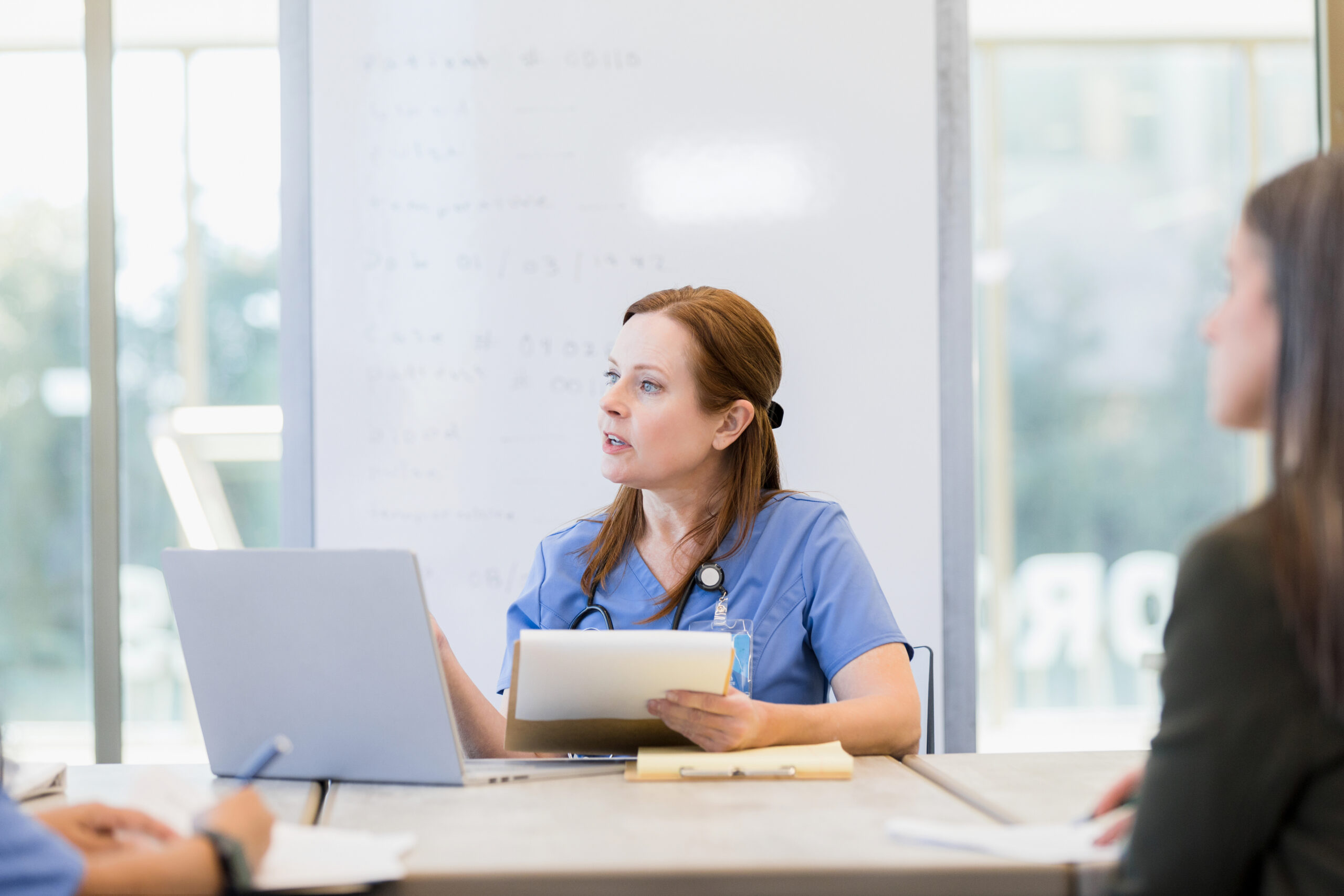I was very excited for my first day in an operating room, but woefully unprepared for what to expect. Part of that was not understanding the flow of an OR and worrying I would embarrass myself in the unfamiliar environment. (For a run down on what to expect, I recommend you read my last article about how to navigate your first time in the OR!)
The other part of my anxiety was not knowing how I would react to some of the unfamiliar body fluids and smells unique to surgery. The morning of the case I neglected to eat or drink, worried I would need to use the restroom. Unfortunately, that led to my lightheadedness and tunnel vision during the case. Instead of suturing at the end, I was in the breakroom drinking juice and eating crackers—and feeling embarrassed.
Over the next six weeks of the rotation, I came to enjoy much more complex, long, and bloody cases without any of the issues I had been ashamed of on my first day. I credit my improvement to developing a lot of the tactics below which kept my mind and body in check during long hours in the OR.
Here are some tips to keep you on your feet (literally)!
 Studying for your shelf exams and Step 2? We’ve got you covered. Meet the new combined Step 2 & Shelf Exams Qbank with 5,000 practice questions that most closely match what you’ll see on your MS3 exams. Get started with 7-day FREE access!
Studying for your shelf exams and Step 2? We’ve got you covered. Meet the new combined Step 2 & Shelf Exams Qbank with 5,000 practice questions that most closely match what you’ll see on your MS3 exams. Get started with 7-day FREE access!
1. Start slow.
If you have the option, try to start with easier and shorter cases. That way, you can hydrate without worrying you’ll be stuck in a case with a full bladder for hours. (More on strategies for hydrating in a bit.)
Since easier and shorter cases tend to be less bloody, you won’t get freaked out by a particularly messy surgery the first time you’re in the OR. By starting off with something easy, you can practice scrubbing and get to know the structure of the OR without worrying about much else.
Recommended Starter Cases
The best cases to start with are laparoscopic cases (i.e., not open abdomen) because you are viewing everything through a camera rather than staring right into someone’s guts or bloody wounds. (If you’re lucky, they’ll let you drive the camera, which is pretty cool.)
Good starter cases:
- Laparoscopic or robotic Ob/Gyn surgeries like hysterectomies, tubal ligations, and myomectomies
- Quick general surgery cases like lipoma or skin cancer removal, hernia repairs, or laparoscopic cholecystectomies or appendectomies
- Straightforward, non-bloody urology cases like hydrocele repair or penile implant placement
Avoid these starter cases:
- C-sections (very bloody)
- Amputations and any orthopedic surgery involving a hammer or saw (very bloody and somewhat barbaric)
- Surgical oncology cases (they’re cool, but loooong)
2. Eat well.
I made the mistake of not eating before my first case because I was worried I’d get queasy. I do NOT recommend doing that! You don’t need to have a huge breakfast (I would recommend against this also) but don’t fast before reporting to the OR.
As for what to eat, I found that protein bars and especially dried fruit worked great and kept my energy up during cases. Remember that you may have a few of them each day, so keep some quick snacks in the breakroom that you can eat between surgeries.
3. Stay hydrated.
This is very tricky, because you have to strike a balance between being hydrated enough to last the whole case but not so hydrated that your bladder is about to burst.
My best recommendation is to hydrate a lot in the afternoon and evening. When you’re done with cases for the day, commit to drinking a lot so that you wake up the next day hydrated without having to take in a lot of fluids before the case.
If you’re a coffee drinker, hydration can be especially tricky. I was very careful not to drink coffee before cases. It’s best to seek out other sources of caffeine, so you don’t need a bathroom break during surgery.
4. Dress wisely.
Overheating is the easiest way to get woozy and wind up on the floor. For this reason, I don’t recommend wearing an undershirt beneath your scrubs. While the OR may seem cold in just your scrubs, you’ll be surprised how much hotter it is once you’re in a full gown, mask, bonnet, and two pairs of gloves.
Additionally, I recommend tying your mask loosely around your face. Having good airflow and not feeling suffocated by your own breathing goes a long way. (If you wear glasses, be sure to tape the top of your mask so they don’t don’t fog up from your breath.)
5. Flex your calves.
Fainting, called “vasovagal” syncope, is in part caused by a drop in blood pressure, which reduces the amount of blood that is supplied to the brain. The body adapts by forcing you to lie l on the ground so the heart doesn’t need to pump against gravity to get blood to your head.
One way you can try to counteract a drop in blood pressure is by squeezing blood from your lower body so that it moves upwards. For example, bouncing on the balls of your feet squeezes your calf muscles against the veins which returns blood to the heart. Alternatively, clenching/unclenching your butt can also achieve some blood return.
These little exercises not only allow you to physiologically overcome the fainting episode, they can help relieve the anxiety that often accompanies pre-syncopal symptoms.
6. Stay calm.
This is easier said than done, but if you’re starting to feel hot, dizzy, and worried you may pass out, start taking some deep breaths.
Look away from the surgical field, especially if you think the blood or other fluids are making you uneasy. Looking at the vitals monitor is a good way to appear engaged while giving yourself a breather.
7. Step back from the table.
If you really feel like you’re close to passing out and none of the usual tricks are working, take a step back from the operating table. The worst thing you can do is faint forward into a sterile field and end up in the patient.
If you step straight back, you’re not breaking the sterile field and you can come back to the table when you’re feeling better as long as you don’t touch anything. A sharp circulating nurse may get to you in time and give you a stool to sit on so you can take a few minutes and collect yourself. If this happens, just relax, and return to the table when you’re ready.
While having to step back may feel embarrassing at the time, it will actually earn you a lot of respect from your colleagues in the OR. Your self-awareness, poise, preservation of the sterile field, and ability to put the patient’s safety above all else (including your ego) are all admirable. Everyone will think highly of you because of how you handled the situation.
Further Reading
Humans weren’t built to see inside each other. Remember that surgery is fundamentally strange and gross so you shouldn’t feel embarrassed if certain things make you queasy. Everyone has different things that make their stomach turn, including surgeons. Be patient and graceful with yourself—you’re doing a lot on little sleep!
Keep these tips in mind and I’m sure you’ll excel at your surgical clerkship—or at least survive it so you can move on to your true passion.
For more (free!) content from Blueprint tutors to help you during your clinical rotations, check out these other posts on the Med School blog:





